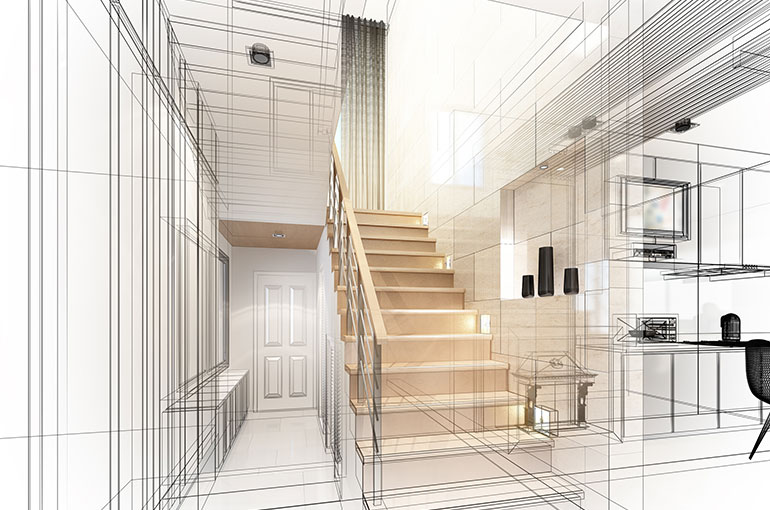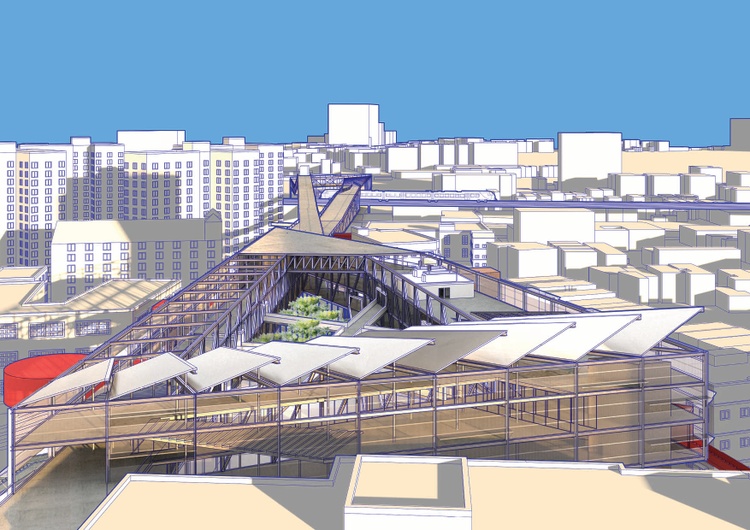Exactly How CDA Architects Integrate Eco-Friendly Practices in Architectural Projects
Exactly How CDA Architects Integrate Eco-Friendly Practices in Architectural Projects
Blog Article
A Detailed Introduction of Architectural Styles and Their Influence on Modern City Planning and Growth
Building styles have long served as a mirror to the social worths and technological improvements of their time, playing a vital role in forming contemporary city planning and advancement. From the magnificence of Neoclassicism to the utilitarian method of Brutalism, each design has actually presented unique concepts that influence city visual appeals and performance.

Historic Overview of Architectural Designs
Throughout background, building styles have actually progressed in reaction to cultural, technical, and ecological elements. Each period shows the dominating values, beliefs, and improvements of its time, bring about a rich tapestry of style that represents human creativity and adaptation. The ancient worlds, such as the Egyptians and Greeks, established foundational designs that stressed balance and percentage, offering both practical and aesthetic functions.
As societies transitioned through the Center Ages, Gothic architecture arised, identified by its verticality and complex detailing, mirroring the spiritual goals of the age. The Renaissance noted a rebirth of timeless ideals, merging art and design in cutting-edge manner ins which affected succeeding styles across Europe.
The Industrial Revolution introduced new materials and construction techniques, prompting activities like Modernism, which tested standard kinds and accepted simplicity and capability. The 20th century saw a diversity of designs, with Postmodernism responding versus the raw minimalism of its precursor, incorporating historical references and eclectic aspects.
Today, building designs remain to advance, driven by globalization and sustainability issues, mirroring a vibrant interaction in between heritage and advancement (cda architects). This historical overview underscores the importance of style as a mirror of social development and as a driver for metropolitan development
Secret Architectural Styles Explained
The diversity of building designs shows the myriad influences that form our developed setting, each personifying distinct attributes and social relevances. Secret architectural styles include Classic, Gothic, Baroque, Innovation, and Postmodernism, each representing special historical contexts and visual ideologies.
Classic design, rooted in old Greece and Rome, highlights proportion, proportion, and the usage of columns. On the other hand, Gothic architecture, growing in the Center Ages, is defined by pointed arcs, ribbed safes, and flying buttresses, creating an angelic quality in sanctuaries. Baroque design, arising in the 17th century, is noted by magnificence, fancy embellishment, and a vibrant interaction of light and shadow.
Modernism, which gained energy in the early 20th century, focuses on feature over kind, making use of brand-new products like steel and glass to create minimalist structures. Postmodernism, responding against the austerity of Innovation, embraces eclecticism and historical recommendation, frequently incorporating playful aspects and irony.
Recognizing these designs provides insight right into the cultural narratives and technical innovations of their particular periods, highlighting just how style serves not equally as a shelter, however as a representation of social worths and desires.
Influence On Urban Planning
In shaping the development of cities, architectural designs dramatically influence metropolitan planning decisions. The option of building design typically determines the appearances, functionality, and overall character of city atmospheres.
Moreover, building styles can affect zoning policies and land make use of plans. Urban coordinators must consider the dominating building fads when developing districts, making certain that new growths balance with existing structures. This factor to consider cultivates cohesive urban landscapes and boosts neighborhood identity.
The execution of details architectural styles can likewise affect socioeconomic aspects within a city. For example, high-end modern styles may bring in affluent locals check my reference and businesses, leading to gentrification, while much more cost effective housing options might prioritize functional and sustainable layouts to accommodate varied populations. Inevitably, the interplay in between building designs and metropolitan preparation creates dynamic cities that reflect both historical context and modern needs, forming the lived experiences of their inhabitants.
Sustainability and Modern Style

Contemporary architectural movements, such as biophilic design and environment-friendly architecture, advocate for frameworks that integrate with their surroundings, making use of all-natural materials and promoting biodiversity. These designs often integrate eco-friendly power sources, such as solar panels and wind generators, to minimize dependence on fossil gas and reduced carbon impacts.
Furthermore, the integration of innovative technologies, such as smart structure systems, improves energy management, optimizing resource use while making sure passenger convenience. Cutting-edge water monitoring methods, including rain harvesting and greywater recycling, more add to lasting metropolitan environments.
Notably, sustainability extends past ecological concerns; it includes social and financial dimensions. By fostering neighborhood health and promoting inclusivity, modern architectural styles line up with sustainable development objectives. The advancement of building practices continues to shape durable cities that not just fulfill the needs of the existing but additionally secure the future for generations to come.
Community Involvement in Style
Area interaction in design serves as an important bridge Recommended Site in between engineers and the populations they serve, guaranteeing that the built environment reflects the needs and desires of its individuals. This collective process welcomes neighborhood members to add their understandings and preferences, promoting a sense of ownership and responsibility toward the rooms they inhabit.
Efficient area interaction utilizes different techniques, such as workshops, surveys, and public discussion forums, to gather diverse perspectives. These methods promote a two-way discussion, enabling engineers to recognize neighborhood contexts while equipping homeowners to voice their worries and desires. This inclusivity not only boosts the design high quality but also advertises social equity by resolving the unique obstacles faced by marginalized groups.
Moreover, community involvement can lead to ingenious remedies that may not emerge in a typical layout process. By incorporating local about his expertise and cultural values, designers can produce rooms that reverberate even more deeply with users, boosting usability and sustainability. Inevitably, focusing on area involvement in design processes causes environments that nurture social communications, assistance wellness, and enhance neighborhood connections, thereby playing a critical duty in forming contemporary metropolitan landscapes.
Conclusion
Architectural styles have profoundly affected contemporary city planning and advancement, showing advancing social and technical contexts. As cities continue to expand and adapt, the recurring discussion between building heritage and modern-day style principles will remain essential in creating comprehensive, dynamic rooms that enhance top quality of life and advertise social equity.
Report this page